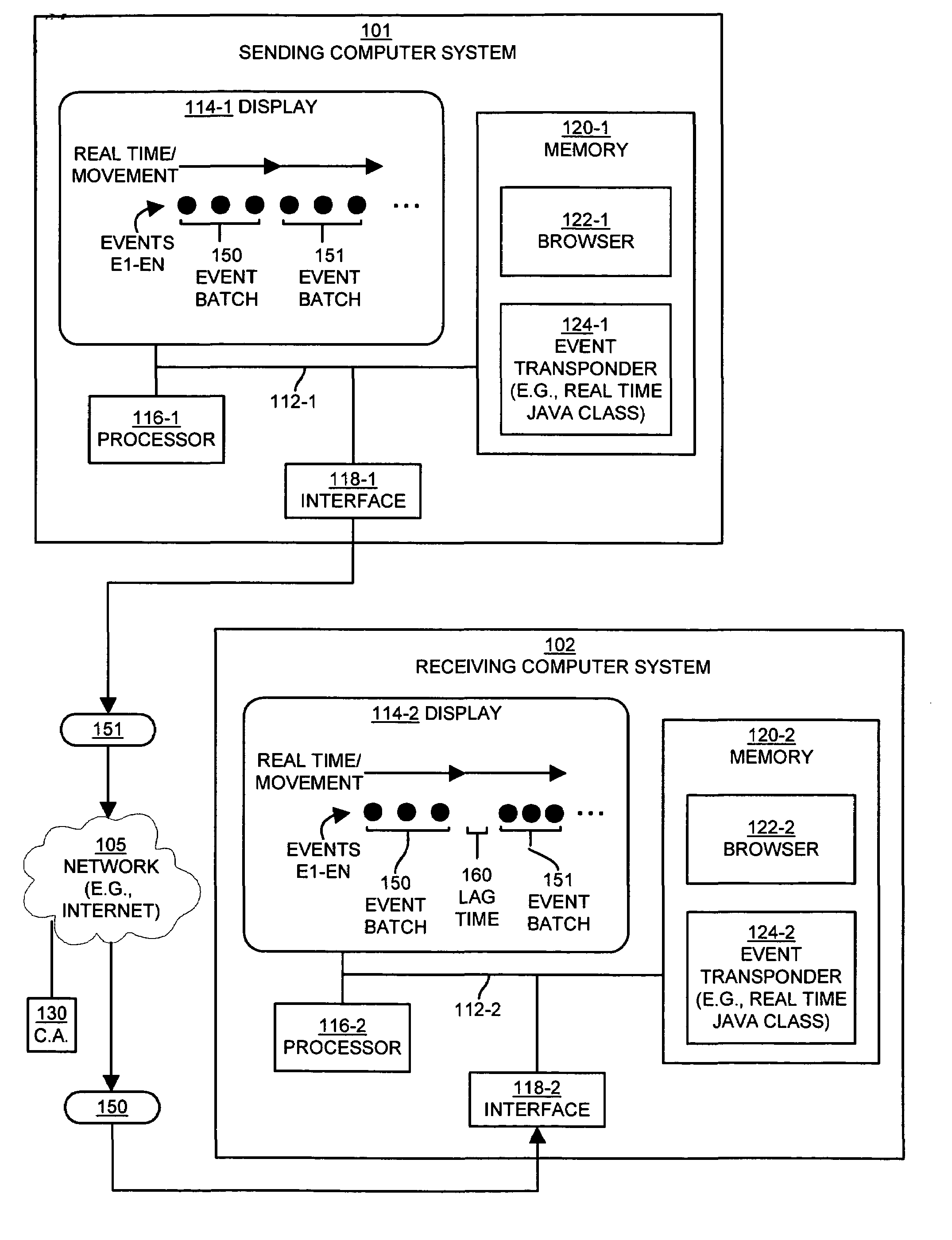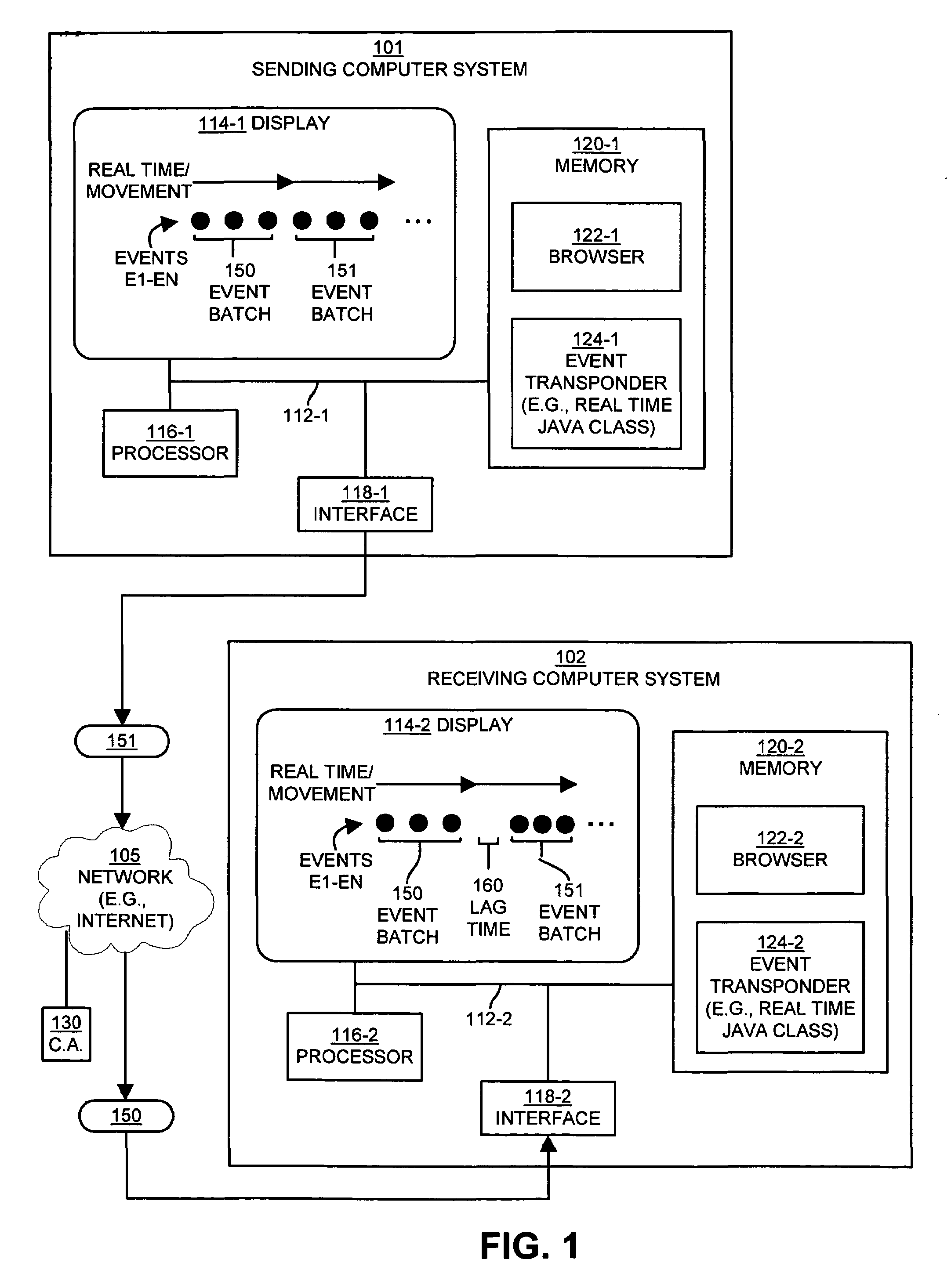Method and apparatus for exchanging event information between computer systems that reduce perceived lag times by subtracting actual lag times from event playback time
a technology of event playback and computer system, applied in the field of computer system event playback information exchanging mechanisms, can solve the problems of affecting the realistic recreation and timing the playback or reproduction of the same graphical event on the second computer system can suffer from processing and transmission delays, and the time interval of time is reduced, so as to achieve the effect of reducing the time interval
- Summary
- Abstract
- Description
- Claims
- Application Information
AI Technical Summary
Benefits of technology
Problems solved by technology
Method used
Image
Examples
Embodiment Construction
[0039]The present invention provides techniques and mechanisms that allow sending and receiving computer systems to exchange event information such that the receiving computer system can re-create events based on the event information while compensating for lag time required to receive the event information from the sending computer system. In particular, on a sending computer system, the system of the invention can detect the occurrence of events and can store event information related to the events in an event batch. The sending computer system can then transmit an event batch containing the event information to a receiving computer system. An event transponder configured according to the invention on the receiving computer system can receive the event batch and can use timestamp and / or other information associated with the event batch to calculate a lag time required to receive the event batch. The event transponder of the invention can then use event information within the event...
PUM
 Login to View More
Login to View More Abstract
Description
Claims
Application Information
 Login to View More
Login to View More - R&D
- Intellectual Property
- Life Sciences
- Materials
- Tech Scout
- Unparalleled Data Quality
- Higher Quality Content
- 60% Fewer Hallucinations
Browse by: Latest US Patents, China's latest patents, Technical Efficacy Thesaurus, Application Domain, Technology Topic, Popular Technical Reports.
© 2025 PatSnap. All rights reserved.Legal|Privacy policy|Modern Slavery Act Transparency Statement|Sitemap|About US| Contact US: help@patsnap.com



